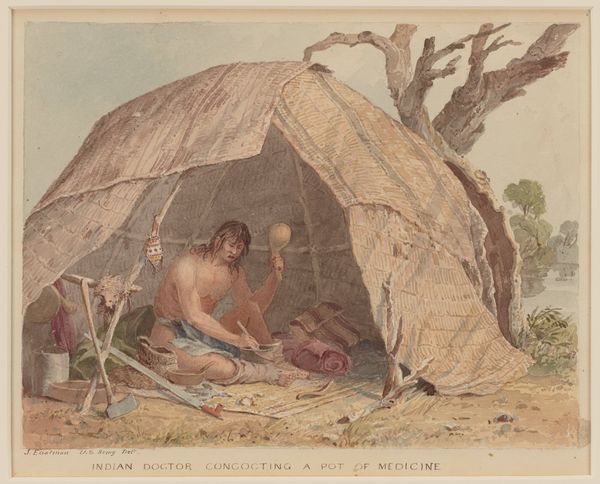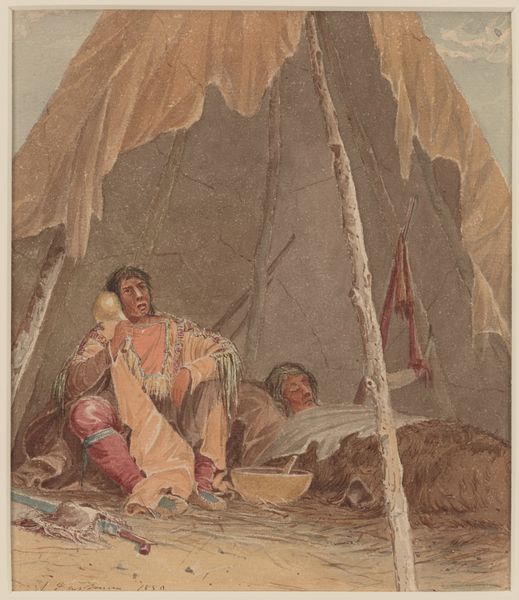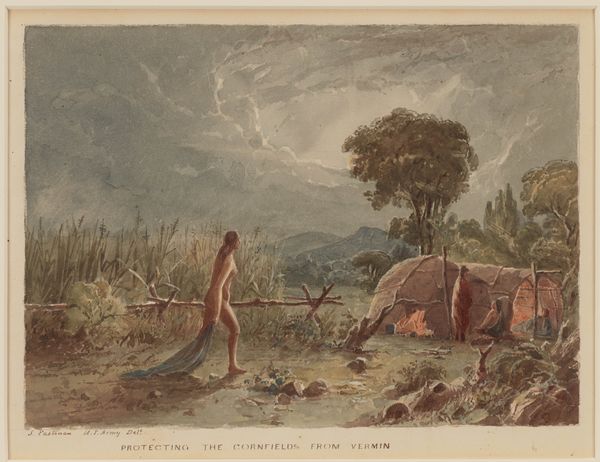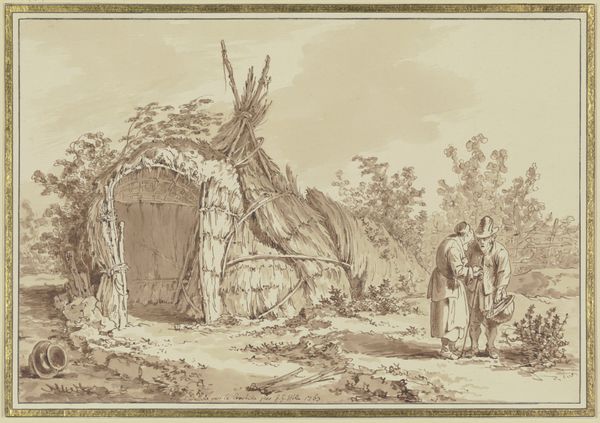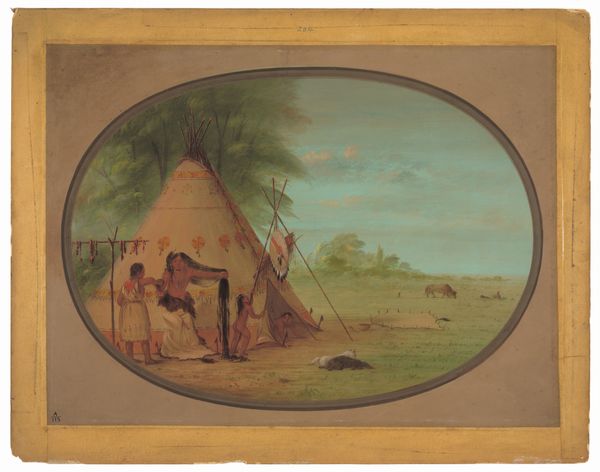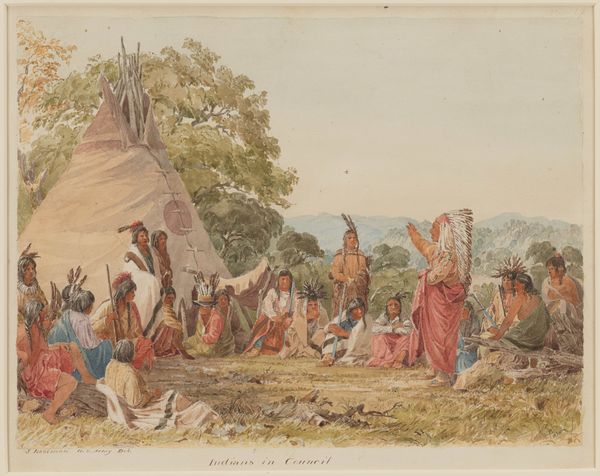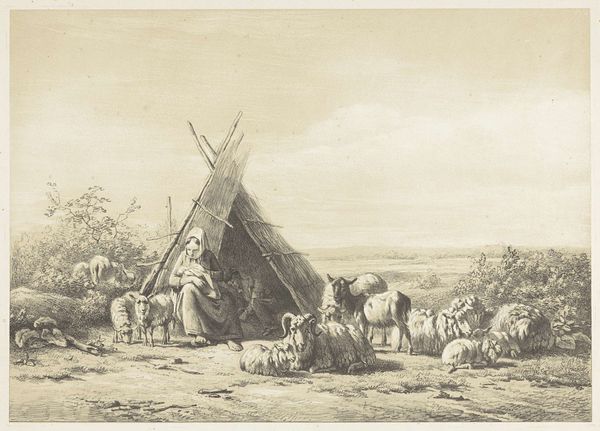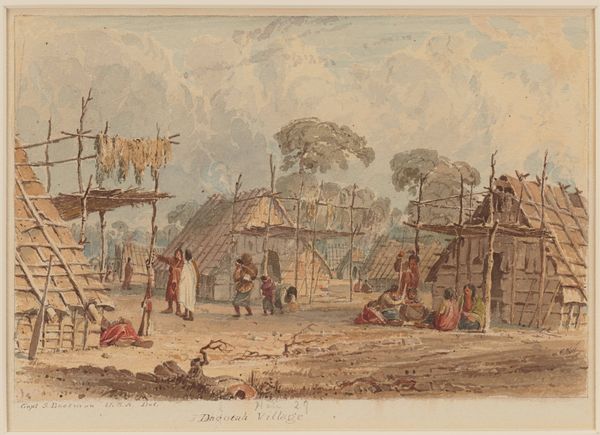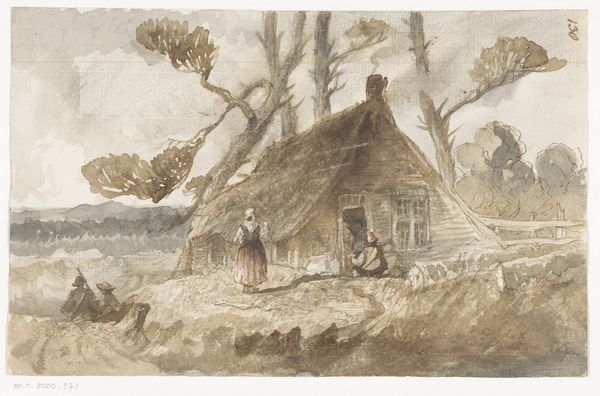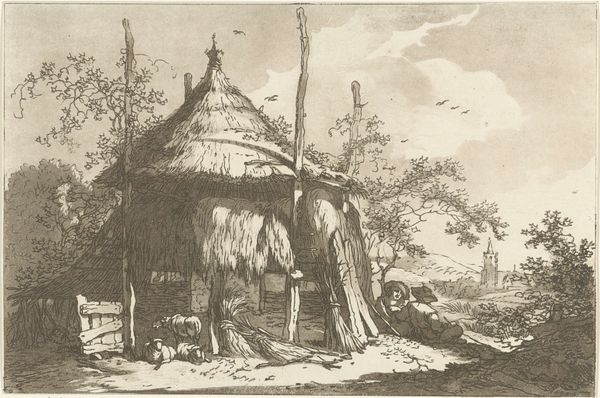
#
narrative-art
#
landscape
#
oil painting
#
indigenous-americas
Dimensions: 6 7/8 × 9 7/8 in. (17.5 × 25.1 cm) (image)9 1/2 × 12 7/16 in. (24.1 × 31.6 cm) (sheet)17 9/16 × 21 1/2 × 1 1/8 in. (44.6 × 54.6 × 2.9 cm) (outer frame)
Copyright: Public Domain
Editor: This is Seth Eastman’s “Menstrual Lodge,” painted between 1849 and 1855, using watercolor. The scene feels quite intimate. I'm struck by the contrast between the detailed depiction of the lodges and the soft, almost dreamy, background. What visual elements stand out to you in this piece? Curator: Note how the lodges themselves are rendered. Observe their forms – almost geometric in their construction, particularly in how Eastman depicts light playing on their surfaces. Consider, too, the color palette. The limited range of earthy tones lends the piece a sense of unity, directing our gaze to the slight variation in texture between the thatching and the landscape. How does the artist articulate value, moving the eye from darker shaded areas toward the bright, cloud-covered skies? Editor: The texture is achieved with many little brush strokes, but the tones are pretty muted. It does look very well-composed, with a good distribution of weight on both sides, drawing your eye across. Curator: Precisely. Eastman masterfully orchestrates the pictorial space. What semiotic meanings may the placement and scale hold? Do you perceive any symbolism, especially considering the relationship between interior and exterior, figure and setting, or foreground and background? How does the linear structure influence its narrative? Editor: That's an interesting perspective. Thinking about the composition in those terms does add layers of complexity. It seems the linear elements give a lot of meaning in guiding us and directing the story here. I initially was just attracted to its sort of quiet mood. Curator: Consider then how the artist’s formal choices contribute to that atmosphere. Form and content, in the best artworks, exist in symbiotic dialogue, enhancing and informing each other to express the meaning of the artwork. Editor: I’ll definitely look at artwork differently after this, considering how the elements support the story being conveyed. Thanks for the insights!
Comments
minneapolisinstituteofart about 2 years ago
⋮
U.S. Army Captain Seth Eastman was a trained artist who served twice on the frontier at Minnesota’s Fort Snelling, from 1830 to 1832 and again from 1841 to 1848. His extensive firsthand, peaceful encounters with Native Americans gave him extraordinary opportunities to observe their customs and practices, which he documented in his art. The shape and bark covering of this hut apparently identify it as Anishinaabe (Ojibwe). This watercolor belongs to a series that he made between 1849 and 1855 to illustrate Henry Rowe Schoolcraft’s six-volume survey, "Historical and Statistical Information Respecting the History, Condition and Prospects of the Indian Tribes of the United States" (Philadelphia: Lippincott, Grambo & Co., 1851-57). Mia’s 35 watercolors and drawings for the project represent an astounding array of subjects: muskrat hunting, fish spearing, pest control, rice gathering, maple sugaring, shelter, travel, medicine, mourning, dancing, civics, and topography. With such variety and Eastman’s well-informed clarity of depiction, they constitute an unparalleled visual account of native ways in our region.
Join the conversation
Join millions of artists and users on Artera today and experience the ultimate creative platform.
